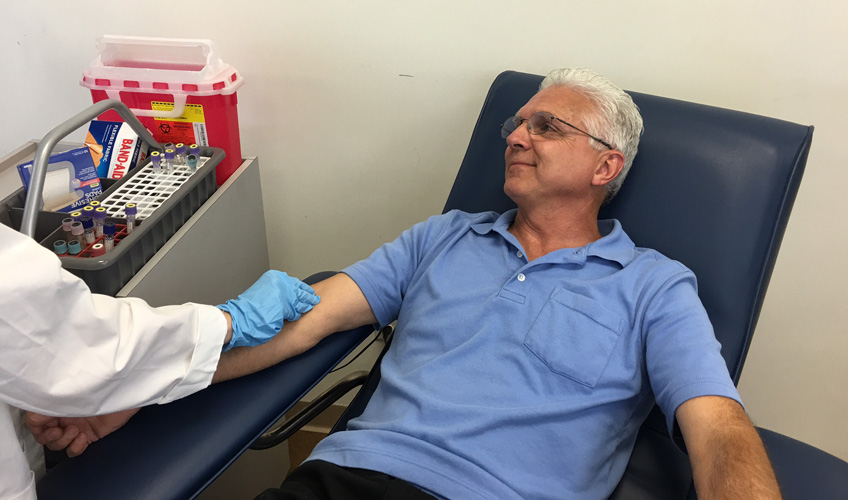See This Report on Northeast Medical Institute - New Haven Campus Phlebotomy Course & Cna Class
See This Report on Northeast Medical Institute - New Haven Campus Phlebotomy Course & Cna Class
Blog Article
The 6-Minute Rule for Northeast Medical Institute - New Haven Campus Phlebotomy Course & Cna Class
Table of ContentsNortheast Medical Institute - New Haven Campus Phlebotomy Course & Cna Class Can Be Fun For AnyoneUnknown Facts About Northeast Medical Institute - New Haven Campus Phlebotomy Course & Cna ClassThe Best Guide To Northeast Medical Institute - New Haven Campus Phlebotomy Course & Cna ClassA Biased View of Northeast Medical Institute - New Haven Campus Phlebotomy Course & Cna ClassA Biased View of Northeast Medical Institute - New Haven Campus Phlebotomy Course & Cna ClassWhat Does Northeast Medical Institute - New Haven Campus Phlebotomy Course & Cna Class Do?
The usage of such tools must be accompanied by various other infection prevention and control techniques, and training in their use. Not all safety devices are appropriate to phlebotomy. Before choosing a safety-engineered device, individuals ought to extensively check out offered devices to establish their appropriate use, compatibility with existing phlebotomy methods, and effectiveness in securing staff and individuals (12, 33).For settings with reduced resources, price is a driving factor in procurement of safety-engineered gadgets. Where safety-engineered tools are not offered, skilled usage of a needle and syringe is acceptable.
One of the crucial markers of high quality of care in phlebotomy is the involvement and teamwork of the patient; this is equally valuable to both the health and wellness employee and the individual. Clear information either created or spoken must be available to each person that goes through phlebotomy. Annex F offers sample text for discussing the blood-sampling treatment to a client. In the blood-sampling space for an outpatient department or center, offer a comfortable reclining sofa with an arm rest.
Some Known Details About Northeast Medical Institute - New Haven Campus Phlebotomy Course & Cna Class
Make sure that the signs for blood sampling are clearly defined, either in a composed protocol or in documented directions (e.g. in a research laboratory form). Whatsoever times, comply with the approaches for infection avoidance and control detailed in Table 2.2. Infection prevention and control practices. Gather all the devices required for the procedure and place it within safe and simple reach on a tray or trolley, ensuring that all the products are plainly visible.
Where the individual is grown-up and conscious, comply with the actions detailed listed below. Introduce yourself to the individual, and ask the person to state their full name. Inspect that the research laboratory form matches the client's identification (i.e. match the person's information with the laboratory form, to make certain accurate recognition). Ask whether the license has allergic reactions, phobias or has ever passed out throughout previous shots or blood attracts.
Make the patient comfortable in a supine setting (ideally). Place a clean paper or towel under the patient's arm. Talk about the test to be carried out (see Annex F) and obtain spoken permission. The person has a right to reject an examination at any moment before the blood sampling, so it is essential to make sure that the individual has actually understood the treatment.
All about Northeast Medical Institute - New Haven Campus Phlebotomy Course & Cna Class
Prolong the person's arm and inspect the antecubital fossa or lower arm. Locate a vein of an excellent size that is visible, straight and clear.
DO NOT insert the needle where veins are drawing away, due to the fact that this enhances the possibility of a haematoma. Locating the blood vessel will certainly aid in determining the appropriate dimension of needle.
Haemolysis, Recommended Site contamination and visibility of intravenous fluid and medicine can all alter the outcomes (39. Nursing personnel and medical professionals might access main venous lines for specimens adhering to protocols. Specimens from central lines lug a threat of contamination or incorrect research laboratory test outcomes. It is appropriate, yet not optimal, to draw blood samplings when very first presenting an in-dwelling venous tool, before attaching the cannula to the intravenous liquids.
The Definitive Guide for Northeast Medical Institute - New Haven Campus Phlebotomy Course & Cna Class
Failure to allow adequate get in touch with time enhances the risk of contamination. DO NOT touch the cleaned website; in specific, DO NOT place a finger over the blood vessel to assist the shaft of the subjected needle.
Ask the patient to create a hand so the veins are extra popular. Enter the capillary quickly at a 30 degree angle or less, and continue to present the needle along the blood vessel at the most convenient angle of entry - PCT Classes. Once adequate blood has actually been gathered, launch the tourniquet BEFORE withdrawing the needle
What Does Northeast Medical Institute - New Haven Campus Phlebotomy Course & Cna Class Mean?
Take out the needle gently and apply gentle stress to the website with a tidy gauze or dry cotton-wool round. Ask the person to hold the gauze or cotton woollen in area, with the arm prolonged and raised. Ask the patient NOT to bend the arm, because doing so causes a haematoma.

Things about Northeast Medical Institute - New Haven Campus Phlebotomy Course & Cna Class
Do not press the syringe plunger due to the fact that added pressure boosts the threat of haemolysis. Where possible, maintain televisions in a rack and move the rack in the direction of you. Infuse downwards right into the ideal coloured stopper. DO NOT eliminate the stopper since it will launch the vacuum cleaner. If the example tube does not have a rubber stopper, inject incredibly slowly right into the tube as reducing the stress and velocity utilized to move the specimen minimizes the risk of haemolysis.

Report this page